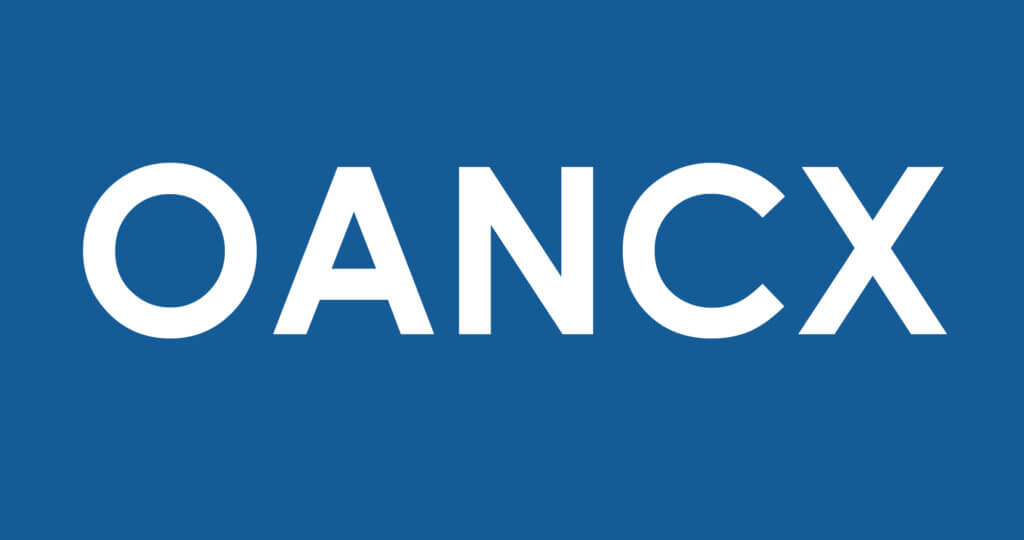Oakmark Bond Fund – Institutional Class
Average Annual Total Returns 06/30/23
Since Inception 06/10/20 -1.29%
1-year 1.41%
3-month 0.31%
Gross Expense Ratio: 1.05%
Net Expense Ratio: 0.52%
Expense ratios are from the Fund’s most recent prospectus dated January 28, 2023; actual expenses may vary.
The Fund’s Adviser has contractually undertaken to waive and/or reimburse certain fees and expenses so that the total annual operating expenses of each class are limited to 0.74%, 0.54%, 0.52% and 0.44% of average net assets, respectively. Each of these undertakings lasts until 1/27/2023 and may only be modified by mutual agreement of the parties.
Past performance is no guarantee of future results. The performance data quoted represents past performance. Current performance may be lower or higher than the performance data quoted. The investment return and principal value vary so that an investor’s shares when redeemed may be worth more or less than the original cost. To obtain the most recent month-end performance data, view it here.
On the Horizon
As we celebrate our three-year milestone, we’re keenly aware of the potential that lies ahead. We envision the bond market entering a new mean yields era that could present unique opportunities—both relative and absolute—that bond investors haven’t experienced for some time. Just as the housing market exhibited resilience following the 2008 financial crisis, we anticipate a similar endurance within the bond market. Whatever the future brings, we will maintain our focus on individual security selection, active management, and the same patient, long-term perspective that characterizes the Oakmark approach. We extend our sincere appreciation to our investors for their unwavering trust in us. Our commitment to upholding Oakmark’s values and pursuing superior performance remains steadfast.
MARKET OUTLOOK POSITIONING
Positioning
As we look ahead to the second half of 2023, we believe the fixed income market offers promise for skilled investors who can navigate its unpredictable currents. The emphasis on “skilled” is crucial because the prevailing conditions don’t seem to offer much to those who seek bargains in the usually liquid segments of major indexes. However, for active managers with the courage to venture into the lesser explored domains of credit, high interest rates may generate lucrative opportunities.
Looking under the hood of these indexes reveals that quite a bit of dispersion has occurred at the subsector and individual security levels. As such, we continue to advocate for a selective approach to high-quality leverage loans, non-agency securitized products, and high yield and investment-grade sectors. In these areas, catalysts for de-leveraging can be identified even against a softening macroeconomic backdrop. Complementing these credit choices, high-quality fixed assets, such as U.S. Treasury and MBS agency paper, may provide a more effective counterbalance to credit risks compared to their recent performances.
We tempered our individual corporate credit positions in the first half of the year, favoring securitized and high-quality duration instead. However, should inflation continue to hold its ground, policy interest rate hikes and macro headwinds may loosen credit spreads and present an opportunity to move from defense to offense, expanding the watchlist of individual names.
It’s important to acknowledge that market volatility, a significant factor last year, likely won’t disappear. Even with the potential for a recession and tighter monetary policies, credit risk should not be entirely dismissed. Instead, we anticipate that the environment will shift away from championing low churn and liquid benchmark investing and toward one where flexibility, agility and opportunism would be rewarded. In lower quality areas of the junk market, especially the less-favored single B and CCC space, solid underwriting should produce an edge, even if the economy slows down considerably.
For instance, consider a recent high-yield name we initiated in the commercial real estate sector. Though we prefer to withhold its specific identity as we are yet to reach our desired investment size, its profile represents an opportunity we believe debt investors can capitalize on today without having to wait for clearer signals from the economy. This business is under the helm of a fresh, committed management team with a clear focus on mitigating future default risk. Importantly, its capital structure as it stands is devoid of major refinancing threats, and even in our most pessimistic scenario, we anticipate the company’s free cash flow to barely break even. In addition, the company maintains a robust liquidity profile, which ensures its survival even if the market backdrop continues to be challenging for its line of business. The bond we have selected offers a substantial yield of nearly 10% over a span of five years. This high return, currently shrouded by negative sentiment and a lack of buyer interest in the sector, is what we consider a concealed gem. We firmly believe that discerning credit investors will soon recognize the diminished default risk associated with this entity. We anticipate that this will happen as they tackle their short-term maturity through either an asset sale or by extending the terms with their current debt holders—options we deem viable even in the face of weak capital markets.
So, while market volatility isn’t likely to vanish, and the threat of recession and tighter monetary policies linger, it’s essential not to completely disregard credit risk. We project a shift from the typical low churn, liquid benchmark investing to an environment where flexibility, agility and opportunism hold sway. Especially in the lower echelons of the junk market, astute underwriting can provide a significant advantage, regardless of a substantial economic slowdown.
Performance
The Oakmark Bond Fund (“the Fund”) returned +0.31% in the second quarter ending June 30, 2023, and it generated +1.15% of excess returns versus its benchmark, the Bloomberg U.S. Aggregate Index. For the six months that ended June 30, the Fund returned +2.04% compared with the benchmark’s +2.09%. Inception-to-date performance was -1.29% through June 30, 2023, generating excess return against the benchmark of 2.48% annually.
Approximately 0.70% of the Fund’s outperformance during the quarter was due to prudent security selection. This was primarily driven by a resurgence in selected financial entities and asset-backed securities. The securities contributing most significantly to this quarter’s performance were Apollo Commercial Real Estate 4.625% Secured bonds of 2029, BANK Shelf 2022 AAA CMBS conduit, and JP Morgan A- Prime Jumbo CMBS conduit. On the other hand, Ally Financial 4.7% perpetual preferred bonds, Wyndham Consumer Finance timeshare ABS – BB rated tranche and Citigroup Inc 4.7% Junior Subordinated Perpetual Notes were the largest detractors from the Fund’s security selection performance.
Allocation decisions also boosted Fund performance, contributing around 0.30% compared to the benchmark. Furthermore, the Fund’s short-duration position relative to the benchmark accounted for about 0.20% of the overall outperformance, given the rise in rates across the curve, particularly at the front end.
By the end of the quarter, the Fund held an overall duration of roughly 5.5 years in contrast to the benchmark’s duration of about 6.3 years. Despite a decrease from the previous quarter, the Fund still maintains a higher proportion of corporate debt compared to the Bloomberg U.S. Aggregate Index at 49% versus 25%, respectively.
Connect with Us
We value our relationship with our investors and welcome any questions or concerns. Please don’t hesitate to reach out to our team. We hold regular investor calls and meetings where you can interact with us and learn more about our strategies and plans. You can also email us at aabbas@harrisassoc.com or mhudson@harrisassoc.com.
The securities mentioned above comprise the following percentages of the Oakmark Bond Fund’s total net assets as of 06/30/2023: Ally Financial 4.700% Due 08-15-69 0.7%, Apollo Com CC 06/24 144A 4.625% Due 06-15-29 0.6%, BANK 2022-BNK40 A4 3.507% Due 03-01-64 3.3%, Citigroup QC 01/25 4.700% Due 07-30-71 0.5%, JPMMT 2022-8 B2 4.674% Due 01-01-53 0.5% and SRFC 2022-1A C 3.300% Due 10-20-38 0.5%. Portfolio holdings are subject to change without notice and are not intended as recommendations of individual stocks.
Access the full list of holdings for the Oakmark Bond Fund as of the most recent quarter-end.
The Bloomberg U.S. Aggregate Index is a broad-based benchmark that measures the investment grade, U.S. dollar-denominated, fixed-rate taxable bond market. The index includes Treasurys, government-related and corporate securities, mortgage-backed securities (agency fixed-rate and hybrid ARM pass-throughs), asset-backed securities and commercial mortgage-backed securities (agency and non-agency). This index is unmanaged and investors cannot invest directly in this index.
The Oakmark Bond Fund invests primarily in a diversified portfolio of bonds and other fixed-income securities. These include, but are not limited to, investment grade corporate bonds; U.S. or non-U.S.-government and government-related obligations (such as, U.S. Treasury securities); below investment-grade corporate bonds; agency mortgage backed-securities; commercial mortgage- and asset-backed securities; senior loans (such as, leveraged loans, bank loans, covenant lite loans, and/or floating rate loans); assignments; restricted securities (e.g., Rule 144A securities); and other fixed and floating rate instruments. The Fund may invest up to 20% of its assets in equity securities, such as common stocks and preferred stocks. The Fund may also hold cash or short-term debt securities from time to time and for temporary defensive purposes.
Under normal market conditions, the Fund invests at least 25% of its assets in investment-grade fixed-income securities and may invest up to 35% of its assets in below investment-grade fixed-income securities (commonly known as “high-yield” or “junk bonds”).
Fixed income risks include interest-rate and credit risk. Typically, when interest rates rise, there is a corresponding decline in bond values. Credit risk refers to the possibility that the bond issuer will not be able to make principal and interest payments.
Bond values fluctuate in price so the value of your investment can go down depending on market conditions.
The information, data, analyses, and opinions presented herein (including current investment themes, the portfolio managers’ research and investment process, and portfolio characteristics) are for informational purposes only and represent the investments and views of the portfolio managers and Harris Associates L.P. as of the date written and are subject to change and may change based on market and other conditions and without notice. This content is not a recommendation of or an offer to buy or sell a security and is not warranted to be correct, complete or accurate.
Certain comments herein are based on current expectations and are considered “forward-looking statements”. These forward looking statements reflect assumptions and analyses made by the portfolio managers and Harris Associates L.P. based on their experience and perception of historical trends, current conditions, expected future developments, and other factors they believe are relevant. Actual future results are subject to a number of investment and other risks and may prove to be different from expectations. Readers are cautioned not to place undue reliance on the forward-looking statements.
All information provided is as of 06/30/2023 unless otherwise specified.







